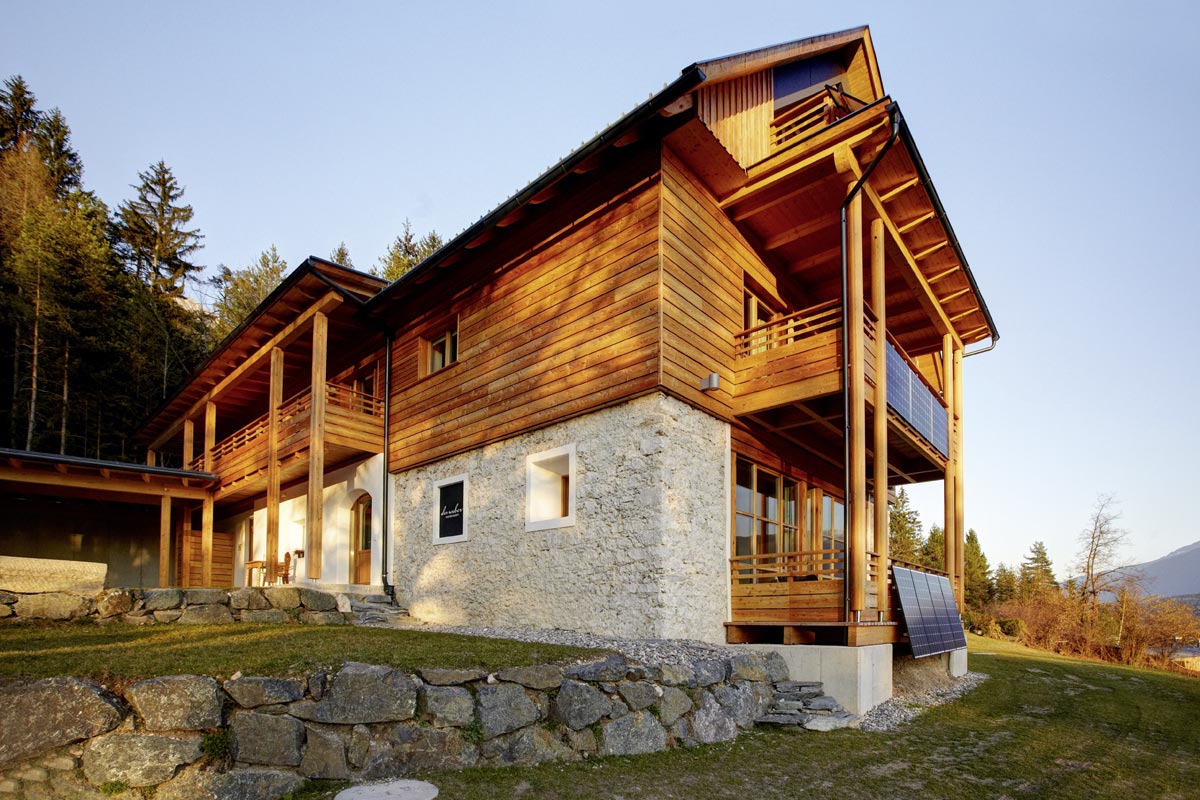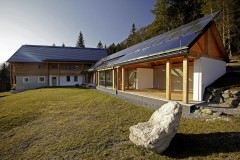With buildings of historic value but in poor condition structurally and energy-wise, thermal renovation is a real challenge both at the planning and at the execution stage. In contrast to renovating postwar buildings, there is a conflict here between aesthetic considerations (preserving a culturally valuable fabric) and the structural measures required from the engineering point of view. In the project “Weber energy surplus house” a traditional farmstead dating from 1852 was converted into a energy surplus building on the basis of a comprehensive approach (by the architects Ronacher ZT GmbH), while the building‘s architectural and historical value was preserved intact.
The energy strategy involved reducing the building‘s energy consumption while exploiting the sun‘s energy by means of photovoltaic elements integrated in the façade and thermal solar panels. To improve the century-old stone walls‘ thermal properties an entirely new cellulose insulation was fitted inside them. All three storeys of the building‘s south face were opened and fitted with generous timber/glass modules, resulting in a huge passive energy gain. As regards using solar energy, the cornerstone is an outbuilding of a shape and size matched to an exact number and modular of photovoltaic elements and thermal collector panels.
The energy budget is based on the building being occupied by twelve persons on average (seminar room and holiday apartments). A 28 m2 collector array delivers thermal energy from the sun. The photovoltaic equipment, totalling 72 modules, comprises panels integrated in the façade (9.54 kWp), plus balconies (3 kWp) and parts of the stone wall round the garden (4 kWp), adding up to a yield of approx. 16.5 kWp from the PV facility. With a further yield of approx. 11.5 kW from solar panels, as against a forecast consumption level of approx. 23.6 kW, the energy budget is definitely in the black.
Heating Energy Demand
before renovation 145,0 kWh/m2 a
after renovation 9,0 kWh/m2 a

